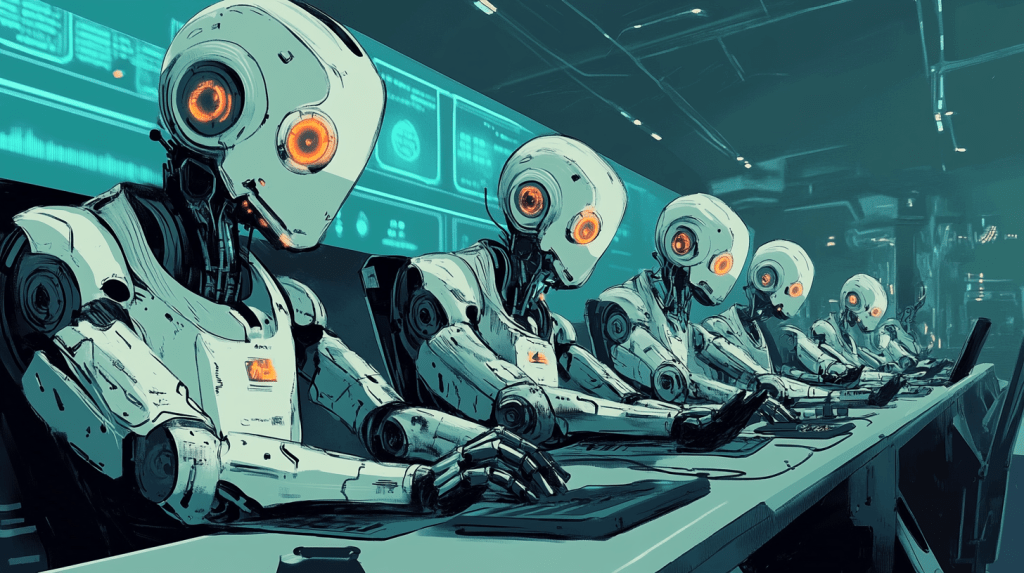Join our daily and weekly newsletters for the latest updates and exclusive content on industry-leading AI coverage. Learn More
Interoperability among AI agents is slowly gaining traction as organizations begin to build networks of agents.
In the past few months, at least two agentic interoperability standards have emerged: Anthropic’s Model Context Protocol (MCP) and AGNTCY, from a collective led by Cisco. As the importance of agents—especially those built on different frameworks and large-language models (LLMs)—talking to each other and getting a fuller picture of an enterprise’s data gains ground, another new protocol is vying for adoption.
Today, Google is unveiling a new interoperability protocol called Agent2Agent, or A2A, that it hopes will become a standard within the industry.
Partnering with more than 50 companies, including Atlassian, Box, Cohere, Intuit, LangChain, MongoDB, Salesforce, SAP, ServiceNow, UKG and Workday, Agent2Agent aims to be the interoperability language for agents and AI applications.
In an exclusive interview, Rao Surapaneni, vice president and general manager of Google Cloud’s Business Application platform, told VentureBeat that A2A makes it easier for agents with different specializations and data nodes to get needed context.
“Everyone has a certain specialization because they own a data node or a logic node, or the current user base is focused on that particular task,” Surapaneni said. “You expect these frameworks to evolve with a very specialized focus. If I’m a customer and I’m deploying these multiple platforms and multiple frameworks, I don’t want to do swivel chair across them.”
Surapaneni said part of the reason Google worked with more than 50 partners and customers is to build A2A to have “an ability to interoperate in an enterprise-ready, secure and trustable manner.”
Building on existing standards
A2A facilitates communication between what Google calls a client agent and a remote agent. The client agent formulates and communicates the task from the end user, and the remote agent acts on the task.
In a separate blog post, Google said A2A depends on several key capabilities built on the protocol.
Capability Discovery: Agents can “advertise their capabilities” through an agent card in JSON format, so the client agent can determine the best remote agent to complete a task.
Task Management: Ensuring communication between agents is oriented only towards completing requests and defines the lifecycles for tasks.
Collaboration: Sending messages around context replies, artifacts (output of tasks), or instructions.
User Experience Negotiation: Specifying the content types and formats the agents are reading.
Surapaneni said Google designed A2A as an open protocol, meaning the larger open source community can contribute to the A2A project and suggest code updates.
“We are opening it up as a community-driven effort and one that is properly open source,” he said. “There’s a governance board around it, but we do want it to be truly open and community-driven.”
In developing A2A, Google focused on enabling agents to work “in their natural, unstructured modalities, even when they don’t share memory, tools, and context.” The protocol also builds on existing standards like HTTP and JSON, so it’s easier to integrate with existing tech stacks and is secure by default.
Rise of interoperability protocols
Of course, A2A is not the only interoperability protocol in the market. AGNTCY, from a collective of Cisco, LangChain, Galileo, LlamaIndex and Glean, aims to create a standard means of communication between agents. LangChain, which is also a partner in Agent2Agent, developed the Agent Protocol. Microsoft updated its AutoGen framework to help make interoperable agents.
On the other hand, many companies, including Microsoft, have already embraced MCP. Even Google added support for MCP through its new Agent Development Kit. Surapanenin assured that A2A would run parallel with MCP.
“We see MCP and A2A as complementary capabilities,” Surapaneni said. “The way we are looking at Agent2Agent is at a higher layer of abstraction to enable applications and agents to talk to each other. So think of it as a layered stack where MCP operates with the LLM for tools and data.”
Surapaneni did not close the door on possible collaboration with other consortia working on agent interoperability protocols. He said A2A is always open for new members, and the protocol will be a living code constantly updated based on community suggestions and needs.
“We will look at how to align with all of the protocols,” Surapaneni said. “There will always be some protocol with a good idea, and we want to figure out how to bring all those good ideas in.”
Interoperability needs arise
Organizations and AI companies agree that the world will run on multiple AI models rather than one model ruling them all, so it makes sense that agents will also be built on different languages and frameworks.
However, a fully realized agent ecosystem requires agents to talk to agents from other companies. But that is easier said than done. Industry standards often take time to take hold and require buy-in from a large portion of companies.
If A2A, MCP, or AGNTCY hopes to succeed in creating a standard way for all AI agents, no matter who built them or which framework they’re built on, there must be mass adoption and deployment.
Surapaneni acknowledged that even with more than 50 partners working on A2A, adoption is still not at a tipping point.
“All of these protocols will evolve, especially the way rate AI is changing, and we’ll find new use cases and scenarios to tackle so it will continue to grow,” he said.


